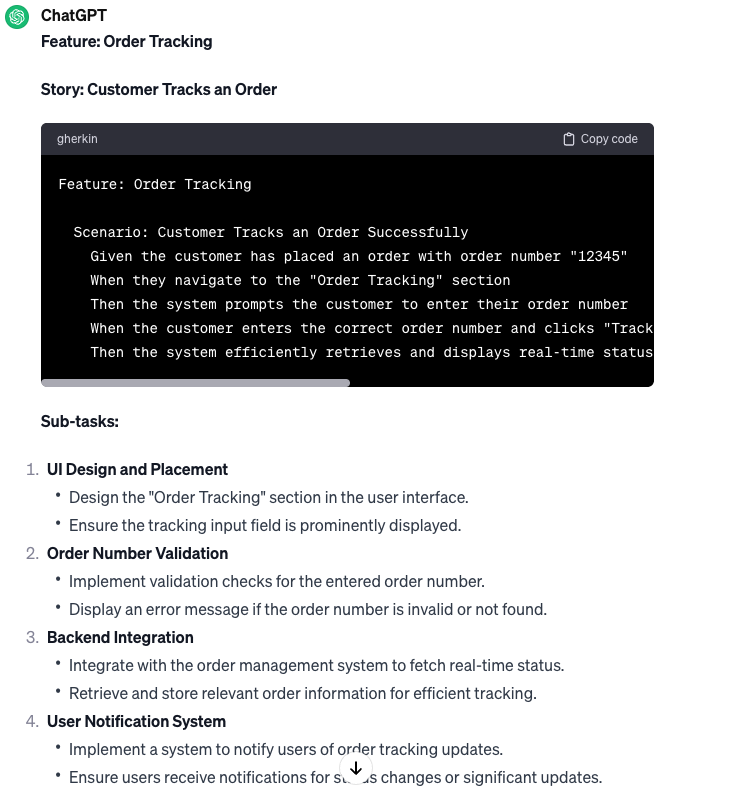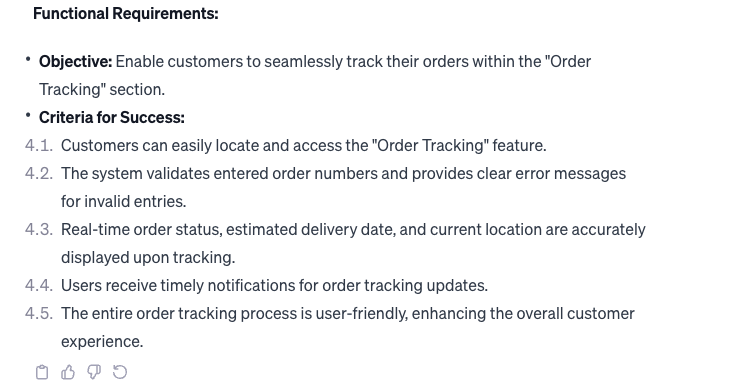LLM Strategies for Product Managers
A Guide from Idea to Market through Prompt Engineering.
Join the DZone community and get the full member experience.
Join For FreeEmbarking on the exciting journey of bringing a product from idea to market requires careful planning and storytelling. Product managers play a crucial role in defining and guiding the success of a product. From the inception of an idea to its market launch, product managers have to navigate through various challenges and make strategic decisions. As a product manager, crafting compelling narratives and strategies is key to success. As the LLM is disrupting the market PMs can use LLMs to build effective strategies at each stage of the product lifecycle to improve their productivity.
This article is all about identifying the life cycle from ideation to market and how we can use prompt engineering to query an LLM model and increase productivity as a product manager.
Product management is the art of turning ideas into experiences, challenges into opportunities, and dreams into tangible realities. A great product manager crafts not just solutions but stories that resonate with the hearts and needs of users.
A Large Language Model (LLM) are advanced artificial intelligence system, primarily based on transformer architectures. and are powerful language models known for their broad language understanding and generation capabilities. Trained on vast datasets, they excel in understanding and generating human-like language. They offer powerful capabilities in natural language processing, enabling tasks such as crafting compelling narratives, generating creative content, and interpreting user queries with high accuracy. Leveraging LLMs empowers product managers to streamline communication, enhance user experiences, and extract valuable insights from textual data throughout the product development lifecycle. Integrating these models requires understanding their architecture, training processes, and the art of effective prompt engineering.
Prompt engineering is the practice of crafting text in a way that a generative AI model can interpret and comprehend. A prompt, which is natural language text outlining the task for the AI, can take various forms, such as a query, command, feedback, or a detailed statement with context and instructions. The process involves formulating queries, specifying styles, offering context, or assigning roles to the AI. Additionally, prompts may include examples for the model to learn from, employing a few-shot learning approach. Effective prompt engineering is like giving clear instructions to a clever robot friend. It's about crafting questions or tasks in a way that helps the robot understand exactly what you want. It's like speaking their language to get the best results!
Let's discuss a few prompt examples for PMs in different phases of product development to get help in documenting and crafting quality stories with meaningful tasks.
The prompts are just hints, a little more effort and you can be creative and add more to add it for sure get the most productive results. We will consider a "To-Do" list as a product for all examples.
- Idea Exploration:
- At the inception of the product journey, we can dive into the story of how the idea was born. We have to discover the issue it wants to address, identify possible challenges for users, and imagine how it fulfills the demands of the market. At the beginning, unravel the story behind your product's idea. Imagine a time when someone realized how hard it was to remember all the tasks for the day. This realization led to the idea of a smart to-do list app that not only stores tasks but also sends friendly reminders.
- Prompt: "Generate a detailed narrative outlining the initial spark of the product idea. Describe the problem it solves, potential user pain points, and how it addresses market needs."
- User Persona Development:
- Create a story around the primary user of your product. Define their characteristics, goals, and challenges. Illustrate how your product becomes an essential part of their daily life, addressing their specific needs and concerns. Create a story about the primary user of your product. Picture a friendly neighbor named Tapan, a busy professional who struggles to stay organized. Describe how your smart to-do list app becomes Tapan's assistant, making his life easier and more enjoyable.
- Prompt: "Create a story around the primary user persona for the product. Define their characteristics, goals, and challenges. Illustrate how the product will enhance their daily life or address specific pain points."
- Competitive Landscape Analysis:
- Navigate through the competitive landscape, telling a strategic tale of key competitors, their strengths, and weaknesses. Share how your product will stand out and carve its path in the market. Navigate through the competitive landscape by telling a story. Consider a marketplace where various to-do list apps exist. Define how your app stands out by offering a delightful experience, combining simplicity with powerful features.
- Prompt: "Compose a strategic analysis of the competitive landscape. Identify key competitors, their strengths and weaknesses, and how our product will differentiate itself in the market."
- Value Proposition Crafting:
- Craft a compelling story that highlights the core value your product offers. Showcase unique features and benefits that distinguish it from other solutions, aligning seamlessly with the needs of your target audience. Craft a compelling story around the core value your product offers. Imagine a conversation with a user named Shree. She loves how your app not only keeps her organized but also adapts to her preferences, creating a personalized and stress-free experience.
- Prompt: "Articulate the core value proposition of the product. Describe the unique features and benefits that set it apart from existing solutions. Consider how it aligns with the target audience's needs."
- MVP Definition:
- Focus on the story of your Minimum Viable Product (MVP), detailing key features prioritized for the launch. Consider scalability and user adoption as you show the way for a successful introduction to the market. Visualize a small group of users who eagerly try out your app's basic features. Their feedback becomes a crucial part of the story, helping you shape the app into something that truly meets their needs.
- Prompt: "Outline the Minimum Viable Product (MVP) for the initial launch. Define the key features and functionalities that will be prioritized to deliver value quickly. Consider scalability and user adoption."
- User Journey Story:
- Map out a user's journey from discovery to becoming a loyal customer. Focus on the touch points, anticipate challenges, and reveal how your product provides solutions at every step of the way. Map out a user's journey with a story. Follow Tapan as he discovers the app, starts using it daily, and eventually becomes a loyal user. Narrate how the app seamlessly fits into different aspects of his life, from work meetings to weekend plans.
- Prompt: "Map out the user journey from discovering the product to becoming a loyal customer. Describe touchpoints, potential challenges, and how the product addresses user needs at each stage of the journey."
- Go-to-Market Strategy:
- Craft a strategic narrative for your go-to-market plan. Define your target audience, outline promotional channels, and share key messaging. Explore pre-launch activities, launch day execution, and post-launch engagement. Imagine Shree sharing her experience with friends and colleagues, creating a buzz around the app. Describe how your marketing campaign spreads the word, making the app a must-have for busy professionals like Tapan and Shree.
- Prompt: "Develop a comprehensive go-to-market strategy. Define the target audience, channels for product promotion, and key messaging. Consider pre-launch activities, launch day execution, and post-launch engagement."
- Iterative Development Plan:
- Tell the story of how your product evolves with an iterative development plan. Discuss how user feedback is collected and integrated into future releases, embracing an Agile approach for continuous improvement. Picture a scenario where user feedback leads to new features, making the app even more user-friendly. Describe an iterative journey where each update brings joy to users like Tapan and Shree.
- Prompt: "Create a phased plan for iterative development. Outline how user feedback will be collected and incorporated into future releases. Consider the Agile methodology and continuous improvement."
- Marketing Campaign Concept:
- Paint a vibrant picture of your marketing campaign. Set the theme, outline key messaging, and choose the most effective channels for promotion, both online and offline. Imagine creating a fun and relatable video featuring Tapan and Shree. Picture them sharing how the app has become an essential part of their lives, adding a personal touch to your marketing strategy.
- Prompt: "Craft a concept for a captivating marketing campaign. Define the theme, key messaging, and channels for promotion. Consider both online and offline strategies for maximum reach."
- Metrics for Success:
- Conclude your journey by defining metrics for success. Share how these indicators align with overarching business goals, reflecting user satisfaction, adoption, and retention. Picture a dashboard filled with positive numbers – increasing user engagement, high satisfaction rates, and a growing community of users who appreciate the simplicity and effectiveness of your smart to-do list app.
- Prompt: "Specify key performance indicators (KPIs) to measure the success of the product. Outline how these metrics align with overarching business goals and reflect user satisfaction, adoption, and retention."
For product managers, these prompts become the tools to shape a compelling narrative that guides their products to success. As we conclude, remember: "Embarking on the product journey is like telling a captivating story. With these simple yet powerful prompts, you have the tools to shape your narrative and guide your product to success. Let your story unfold, embracing each stage of the journey with enthusiasm, adaptability, and a keen eye for the needs of your audience."
Example of a Story Written by Chat-GPT With a Good Prompt.
Prompt: I want you to act as a Product Manager. Define clear and concise Gherkin-style stories for the "Where is My Order" feature on an online retail platform, ensuring a seamless and user-friendly order tracking experience. Make sure that you write the story and various sub-tasks associated with it and write the functional requirements as an objective for completing the story.


Gherkin is a format for writing executable specifications, commonly used with behavior-driven development (BDD) tools.
Remember that we've only scratched the surface. We've explored how these language models can be productive in crafting compelling product narratives, and we've taken baby steps at effective prompt engineering. There's so much more to discover! The landscape of language and AI is vast, and as we continue this adventure, there's always more to learn, experiment with, and explore.
Keep that curiosity alive! LLM is causing quite a disruption in the market scene.
AI is the co-pilot in the journey of product management, navigating through complexities, predicting user needs, and ensuring a smooth ride to success.
Further Learning:
- ChatGPT Prompts for Agile Practitioners
- Ethical Prompt Engineering: A Pathway to Responsible AI Usage
- Prompt Engineering: Unlocking the Power of Generative AI Models
Let's keep the conversation going! I'd love to hear your thoughts on Large Language Models and prompt engineering. Feel free to share your experiences, ask questions, or even share your tips. Your feedback is like a compass guiding me through this language adventure! Drop your thoughts below, and let's explore the world of words together.
Opinions expressed by DZone contributors are their own.

Comments